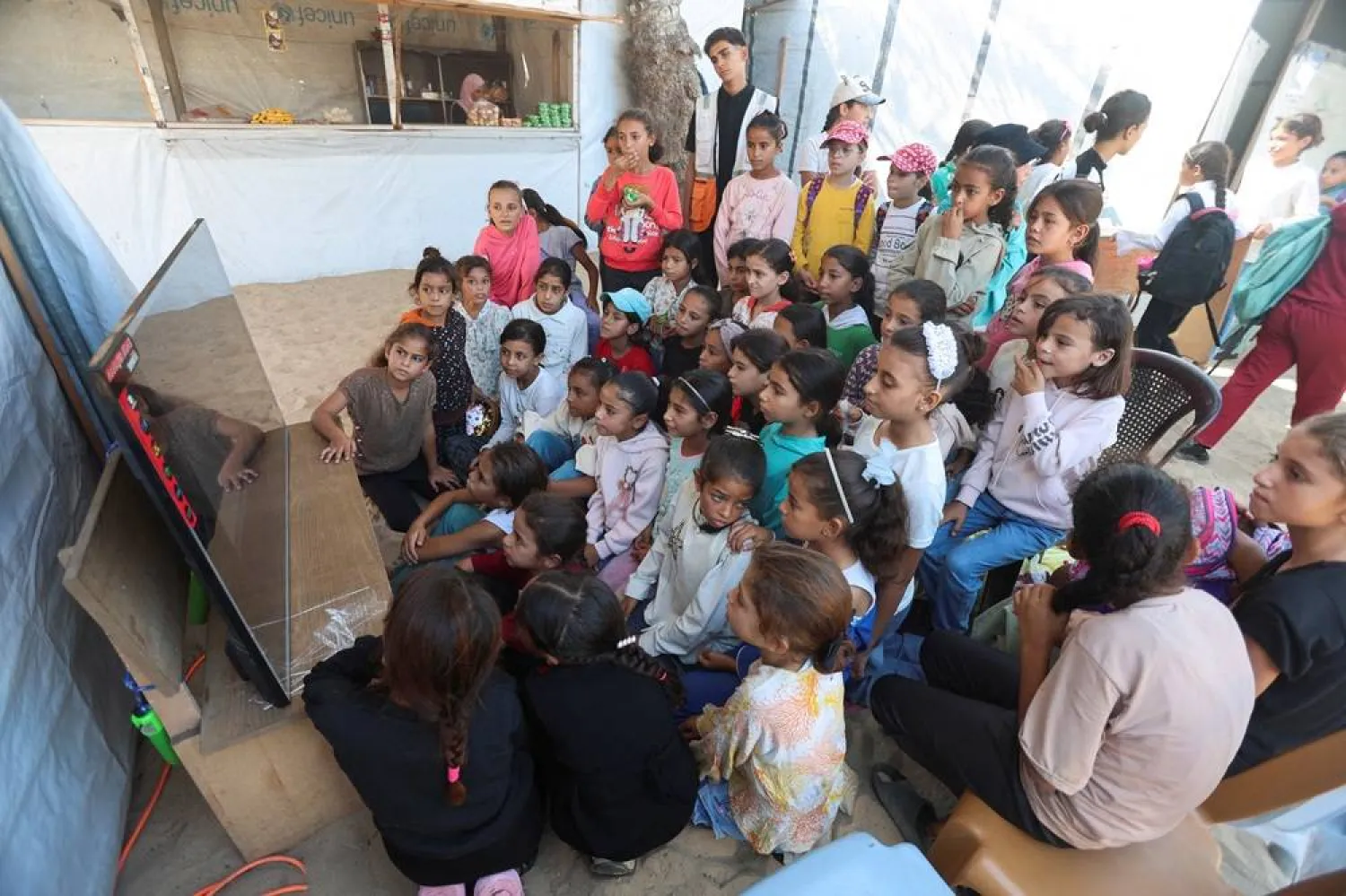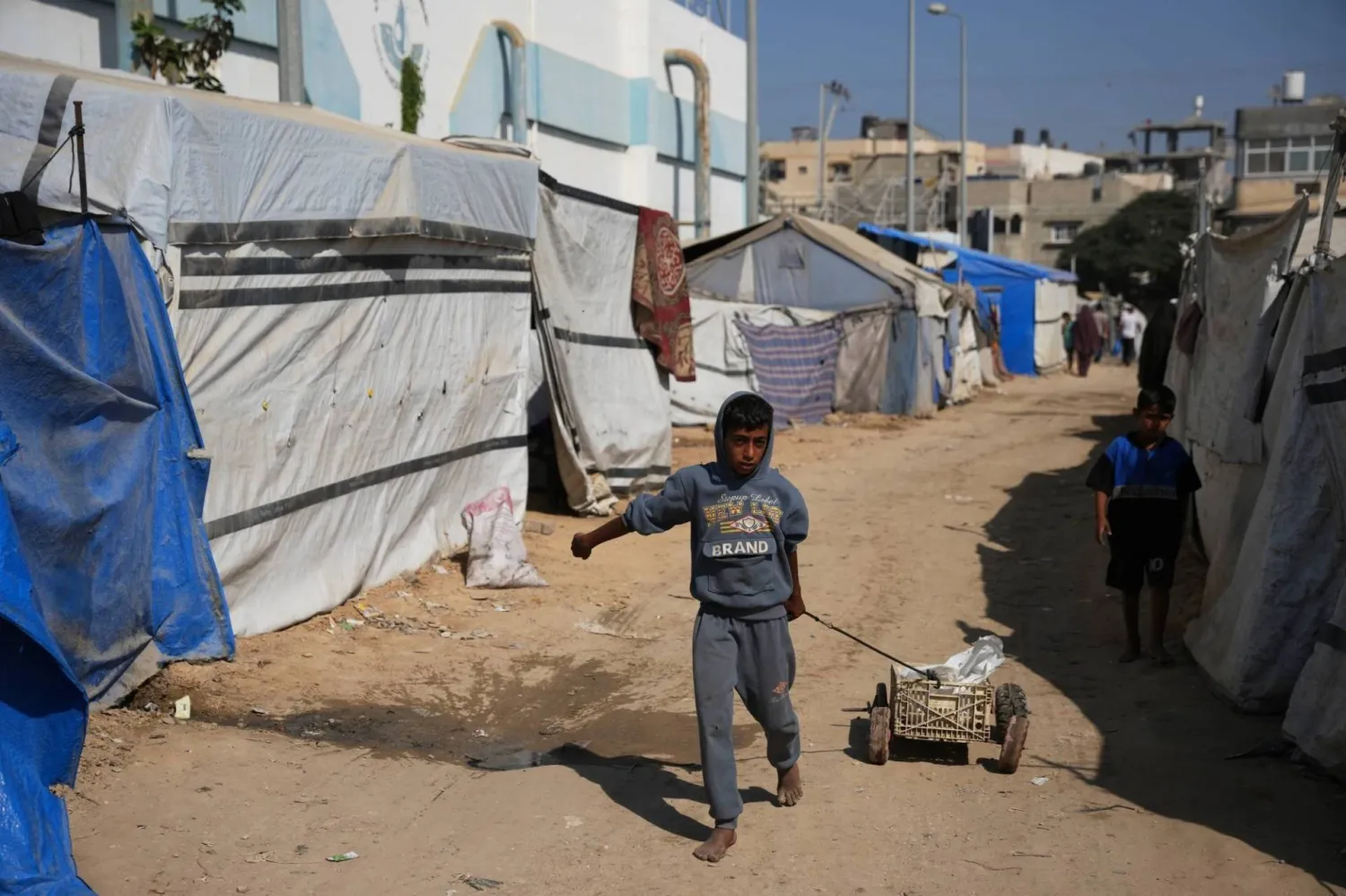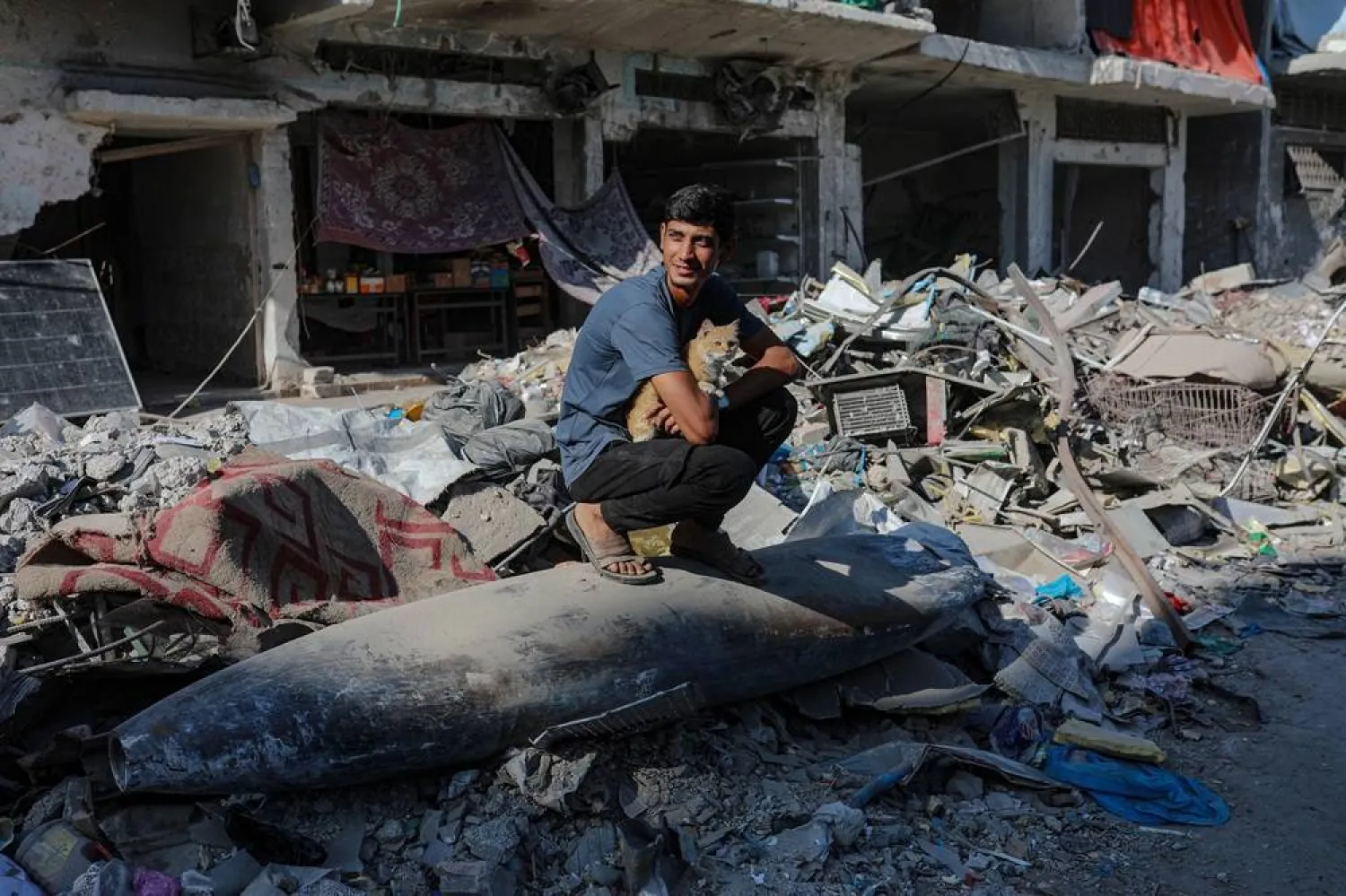In this fifth episode of excerpts from the new book by former Arab League Secretary-General Amr Moussa, “The Years of the Arab League,” Asharq Al-Awsat reviews the efforts deployed to solve the crisis in Sudan.
Moussa’s biography, which will soon be published by Dar El-Shorouk, dedicates two chapters of 44 pages to the Sudanese crisis. The first chapter talks about the dispute between northern and southern Sudan that ended with the secession of the South, while the second is devoted to the political and humanitarian crisis that the Darfur region experienced as of March 2003.
Amr Moussa reveals that the leader of the SPLM, John Garang, told him that he wanted to be the president of all of Sudan, asking: “What is the value of being the leader of a poor, weak and closed country in southern Sudan?”
He explains that he asked the leaders of Sudan to “work to entice southerners into unity, but they considered separation an inevitable fate.” He also considered that the peace agreement with the SPLM was an inspiration for all the rebel movements across all Sudanese regions.
Moussa narrates: “Sudan, and its merciless issues and conflicts, was one of my most important concerns since the beginning of my career in Egyptian diplomacy. This exceptional interest in Sudan was reinforced during my ten years as Minister of Foreign Affairs of Egypt…”
The South Sudan Case
Moussa says that several factors have combined to create and fuel the conflict between the south and the north: ethnic and religious pluralism, the struggle over resources, and the distribution of shares.
Other factors include the policy of marginalization, which the central Sudanese governments have adopted towards all parties, and the failure of these successive governments to promote the values of citizenship.
Moussa also points to the role of the British colonialism in nurturing separatism and entrenching it among the people of southern Sudan, by strengthening the role of missionaries and the policy of weakening Arab culture, replacing northern employees, and preventing northern merchants from reaching the south.
The Arab League secretary-general recounts: “On July 20, 2002, the Sudanese government and the SPLM signed the Machakos Protocol in Kenya, which the Arab League accepted at the time after the Sudanese government signed it… The agreement included two documents: the first provides for the extension of the existing armistice until the end of March 2003, and the second covers a number of points that the two sides have accepted in principle, and they relate to the sharing of power and wealth, but without acknowledging any decisive position regarding them. The two parties agreed to abolish the application of Islamic law in areas inhabited by non-Muslims and to hold a referendum in the south on secession or unity after a six-year transitional period.”
Moussa says that after consulting with the concerned Arab governments, he specified the efforts of the Arab League regarding the conflict between North and South Sudan. Those were divided into two segments: advancing the peace process and the negotiations between the Sudanese government and the SPLM and supporting development and reconstruction in war-stricken areas.
“I had earlier received at the League’s headquarters in Cairo in March 2002, the leader of the popular movement, John Garang, who expressed unitary tendencies and demanded the Arab League’s support. I built on that fruitful meeting and sent an Arab mission headed by Ambassador Samir Hosni, Director of the Africa Department of the Arab League, in April 2003 to the southern city of Rumbek, the headquarters of the Popular Movement in Southern Sudan. It was the first Arab mission to visit that region, to affirm the commitment of the Arab League and its institutions to actively contribute to the development of South Sudan and the areas affected by war, and to make unity an attractive voluntary option.”
Moussa stops to describe his relationship with Garang, with whom he had a “special agreement.”
“I met with him several times after his first visit to Egypt in 1997. His position has evolved gradually… from the struggle to achieve the secession of the South to the fight for equal rights among all Sudanese in all parts of the country, within the framework of the slogan he raised, which is the “New Sudan” that embraces all ethnicities and religions. Perhaps this development in the position of the SPLM leader was one of the reasons that contributed to his unfortunate disappearance from the Sudanese political scene.”
The former Arab League secretary-general continues: “Garang used to tell me in every meeting that brought us together: “What is the value of being the leader or president of the poor, weak, small and closed country of Southern Sudan?”
I applauded and supported that approach, but his vision was not welcomed by any of the Sudanese political actors, whether Africans, Arabs or Westerners, and even the leaders of the (northern) Sudan. But I think that if Garang could achieve a new beginning on the basis of the “New Sudan” with the opportunity to run for the presidency, events may have taken a completely different course, as this would have shaped different dynamics that none of the parties wanted to create.”
The Comprehensive Peace Agreement
“At the invitation of the Kenyan government, on January 9, 2005, I participated with many Arab and African leaders in the signing ceremony of the Comprehensive Peace Agreement between the Sudanese government and the Sudan People’s Liberation Movement in Nairobi. The agreement provided for a permanent ceasefire and the establishment of a 6-year transitional period during which the North and South would cooperate in governing the country. Garang was assigned the responsibilities of the Sudanese First Vice President. The agreement also stipulated the sharing of oil revenues, and the right of the SPLM and its southern allies to form a government for the south to fully manage its affairs for a period of 6 years, which ends with the votes of the people of the south and the oil-rich Abyei region in a referendum on January 9, 2011 on the secession or unity.”
Moussa recounts: “Ahmed Aboul Gheit, Egypt’s foreign minister at the time, was sitting next to me during the loud signing ceremony at Naivasha Stadium in Nairobi. During the ceremony, I drifted away. I thought that things were definitely moving towards the secession of the south. Aboul Gheit seemed to have the same thoughts. He cut short my distraction by telling me: I can tell you that by signing this agreement, the matter will end up in division.”
Moussa asserts that great work was achieved through the coordination meetings held by the Arab League to promote a joint Arab action to make the unity of Sudan an attractive option. Arab funds, specialized Arab organizations, and unions of Arab ministerial councils participated in these meetings.
“The Arab League has made concrete efforts and played active roles to help reach a comprehensive peaceful solution to the Sudanese crisis. However, the performance of the Arab system has suffered and still suffers from a clear gap between decision-making and implementation. The Beirut summit decided to establish the Arab Fund for the Development of South Sudan with financial contributions from Arab countries, but this fund did not receive any significant contributions. The League Council also adopted a resolution calling on the member-states to address Sudan’s Arab debts in order to enable the country to face the challenges of building peace and unity, but this did not happen either.”
The referendum on secession
“A referendum took place in southern Sudan and the people chose the secession. In fact, in my Egyptian capacity, and as Secretary-General of the League of Arab States, I was against the division of Sudan. I spoke at length about this with (former President Omar) Al-Bashir, Sadiq Al-Mahdi, Othman Al-Mirghani, and others, encouraging the rejection of partition and calling for non-tolerance to the plans of separation.”
The political and humanitarian crisis in Darfur
“My assumptions on the signing of the Machakos Agreement between the Sudanese government and the separatist Sudan People's Liberation Movement (SPLM) on July 20, 2002… proved to be true. This agreement was an inspiration for the rebel movements in Darfur, which saw that fighting alone is what brings the Bashir regime to the negotiating table.”
Moussa says that the conflict in Darfur began to heat up until the situation reached the point that led to a great human tragedy. That was in March 2003, when rebels revolted against al-Bashir, claiming they were marginalized. Two armed groups, the Sudan Liberation Movement and the Justice and Equality Movement, declared their rebellion and attacked the city of Al-Fashir, the center of North Darfur State, destroying 7 aircraft at the city’s airport.
The former Arab League secretary-general recounts that the government has responded with the same strategy that the successive governments have adopted since the era of Sadiq al-Mahdi in the 1980s: mobilizing Arab militias known as the Janjaweed, who are known for their ferocity, to combat the rebels.
“Talking about the Darfur crisis and the factors that lead to it, it is necessary to point to the marginalization of the entire region by the central government and the lack of development projects and basic services such as education, health, etc.,” Moussa says.
The escalating developments in Darfur as of March 2003 attracted global interest. Criticism against the Sudanese government began to increase. On March 4, 2004, the High Commissioner for Refugees announced that atrocities were being committed in the Darfur region and demanded the government to urgently open the door to dialogue with the rebels.
A fact-finding mission dispatched by the Arab League
Moussa recounts that he assigned Ambassador Samir Hosni, Director of the Africa Department at the Arab League, to preside over a fact-finding mission that would investigate the reality of the situation in the region. It was the first international mission of its kind to go to Darfur, and its mission included a visit to Sudan, from April 29 to May 15, 2004.
According to the senior Arab official, the mission was able to prove massive violations of human rights on both sides of the conflict, but completely ruled out genocide or ethnic cleansing. The same position was expressed by Alpha Oumar Konare, then-President of the African Union.
“The truth is that these moves on the part of the Arab League were able to open doors for discussion and then for an understanding with the government of Sudan on the importance of the role of the League and the wide scope of its movement,” he asserts.
“This has allowed freedom of movement on the part of the League, further coordination with the African Union, and more movement on the ground in Darfur, starting with an official visit, the first by the Secretary-General of the Arab League to the region.”
With a special agreement with Dar El-Shorouk. All rights reserved.









